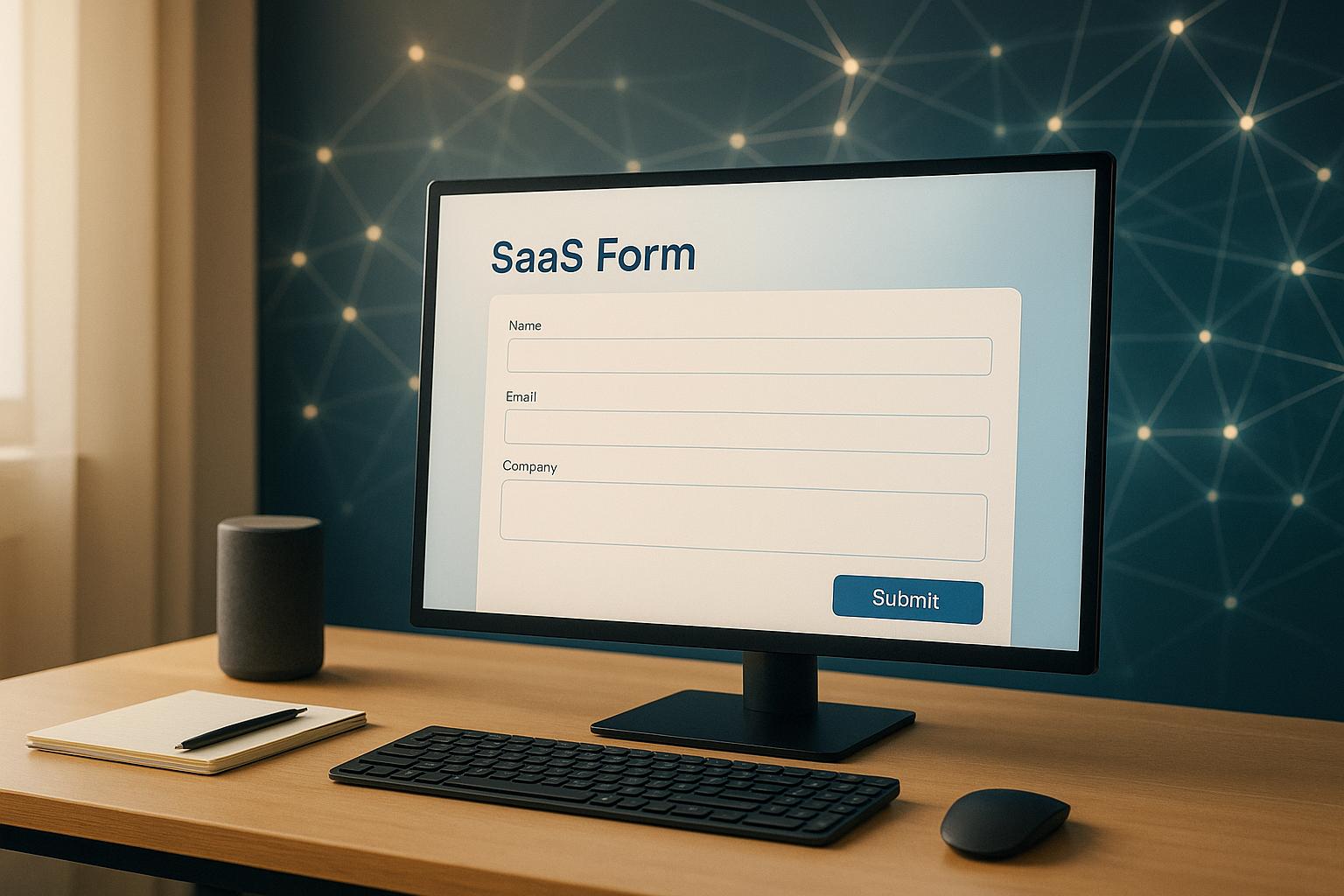Marketing Automation Analytics: Tools That Work Together
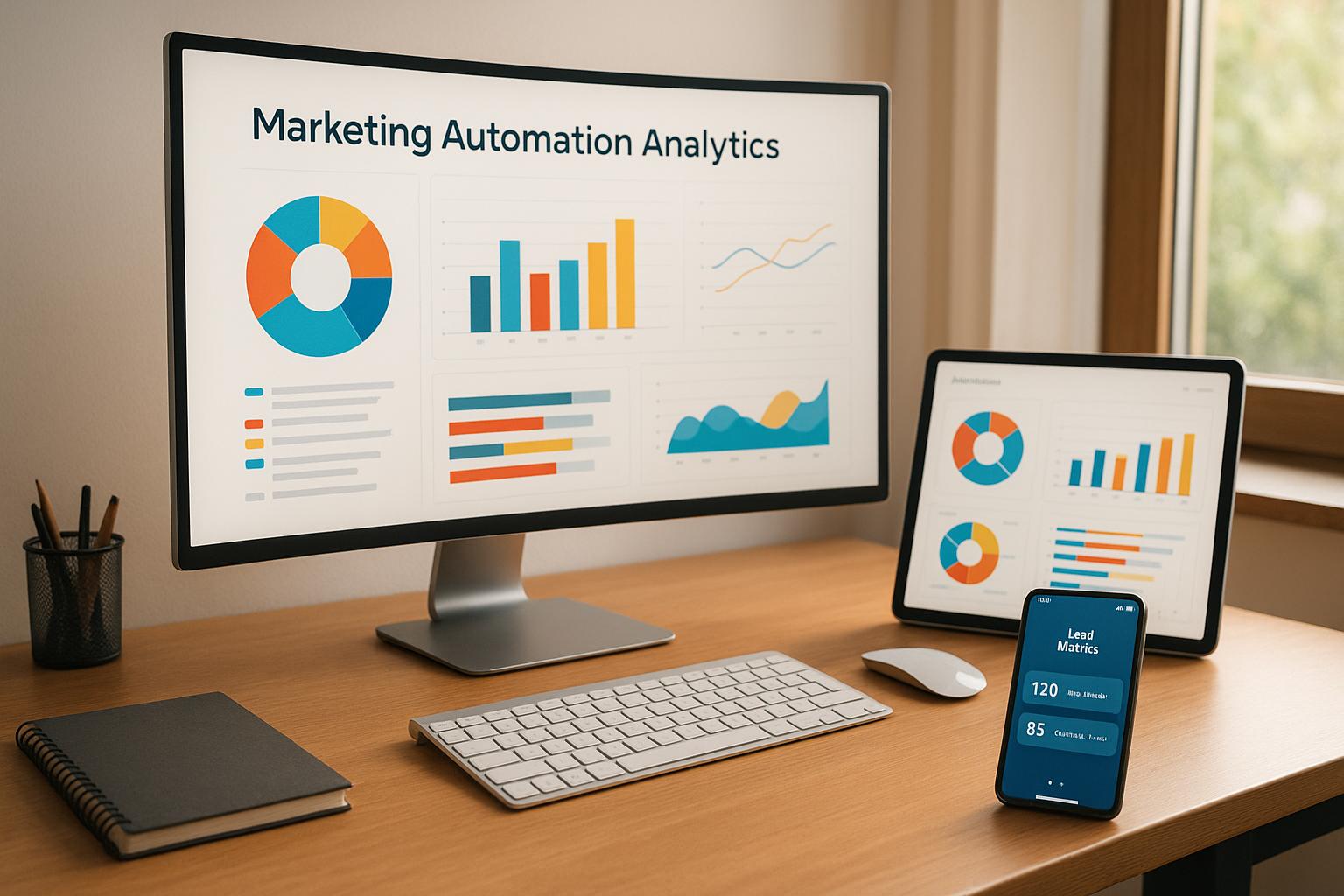
When marketing automation tools and analytics systems don’t integrate, businesses face challenges like disorganized data, outdated insights, and poor campaign performance. Connecting these tools helps improve lead quality, streamline workflows, and track ROI accurately.
Here’s what you need to know:
- Real-time data syncing ensures up-to-date information across platforms, enabling quick adjustments and better results.
- Custom dashboards consolidate data from multiple sources for easier tracking and decision-making.
- Automated triggers initiate actions based on user behavior, boosting engagement and efficiency.
Top tools like Reform, Google Analytics 4, Mixpanel, and Amplitude simplify this integration, offering features like lead enrichment, behavioral tracking, and workflow automation. By combining native integrations, APIs, and webhooks, businesses can eliminate data silos and create a unified system that drives better outcomes.
Key takeaway: Prioritize tools that integrate seamlessly to optimize your marketing efforts and gain actionable insights.
Types of Marketing Automation Integrations
Key Features of Integration-Ready Analytics Tools
The most effective analytics tools work seamlessly with marketing automation systems, ensuring smooth data flow and enabling automated responses. This integration lays the groundwork for key features like real-time updates, customizable dashboards, and automated triggers.
Real-Time Data Synchronization
Real-time updates are the lifeblood of modern marketing analytics. When your analytics tool syncs data instantly, every system in your marketing stack stays up to date, giving you an accurate and current view of campaigns and customer interactions.
"Efficient data synchronization across marketing analytics platforms is critical for real-time campaign optimization, accurate reporting, and strategic decision-making."
This capability allows businesses to respond quickly, whether it's personalizing a website experience or sending targeted cart abandonment emails. Real-time data doesn't just improve speed - it drives better results. For example, 54% of data-driven marketers report that their real-time campaigns often outperform expectations.
The technical side involves connecting site analytics with business intelligence tools to analyze user behavior as it happens. These insights are then linked with marketing automation systems, enabling personalized campaigns triggered by specific user actions. This setup ensures marketing teams can monitor campaigns live and adjust strategies on the fly, whether addressing a drop in engagement or capitalizing on a sudden spike in activity.
Customizable Dashboards and Visualizations
Customizable dashboards turn raw data into actionable insights, highlighting the metrics that matter most to your campaigns.
"Automated dashboards have emerged as game-changing tools that transform how organizations collect, visualize, and leverage their data for strategic decision-making." - Vlad Kovalskiy
These dashboards allow teams to quickly identify trends or potential issues, enabling proactive management. They often consolidate data from multiple sources - email platforms, social media, website analytics, and CRM systems - into a single, unified view. This streamlining makes it easier to understand overall campaign performance and take corrective action when needed.
Automated Workflow Triggers
Behavior-based automation triggers are key to creating seamless and responsive customer experiences. These triggers initiate marketing actions based on user behavior, driving engagement and improving efficiency. For instance, companies using lead nurturing automation report generating 50% more sales-ready leads while reducing costs by 33%.
The importance of automation is widely recognized - 84% of executives consider it critical for customer service operations, and 90% of knowledge workers say it has improved their roles. Starting with simple workflows and scaling over time, with input from key stakeholders, can enhance adoption and make the automation process even more effective.
Top Tools for Marketing Automation Analytics Integration
Bringing together the right tools can unify your marketing data, turning it into a seamless system that provides real-time insights and automates workflows. Here’s a closer look at how Reform, Google Analytics 4 (GA4), Mixpanel, and Amplitude simplify analytics integration with marketing automation.
Reform: A No-Code Solution for Conversion-Focused Form Analytics
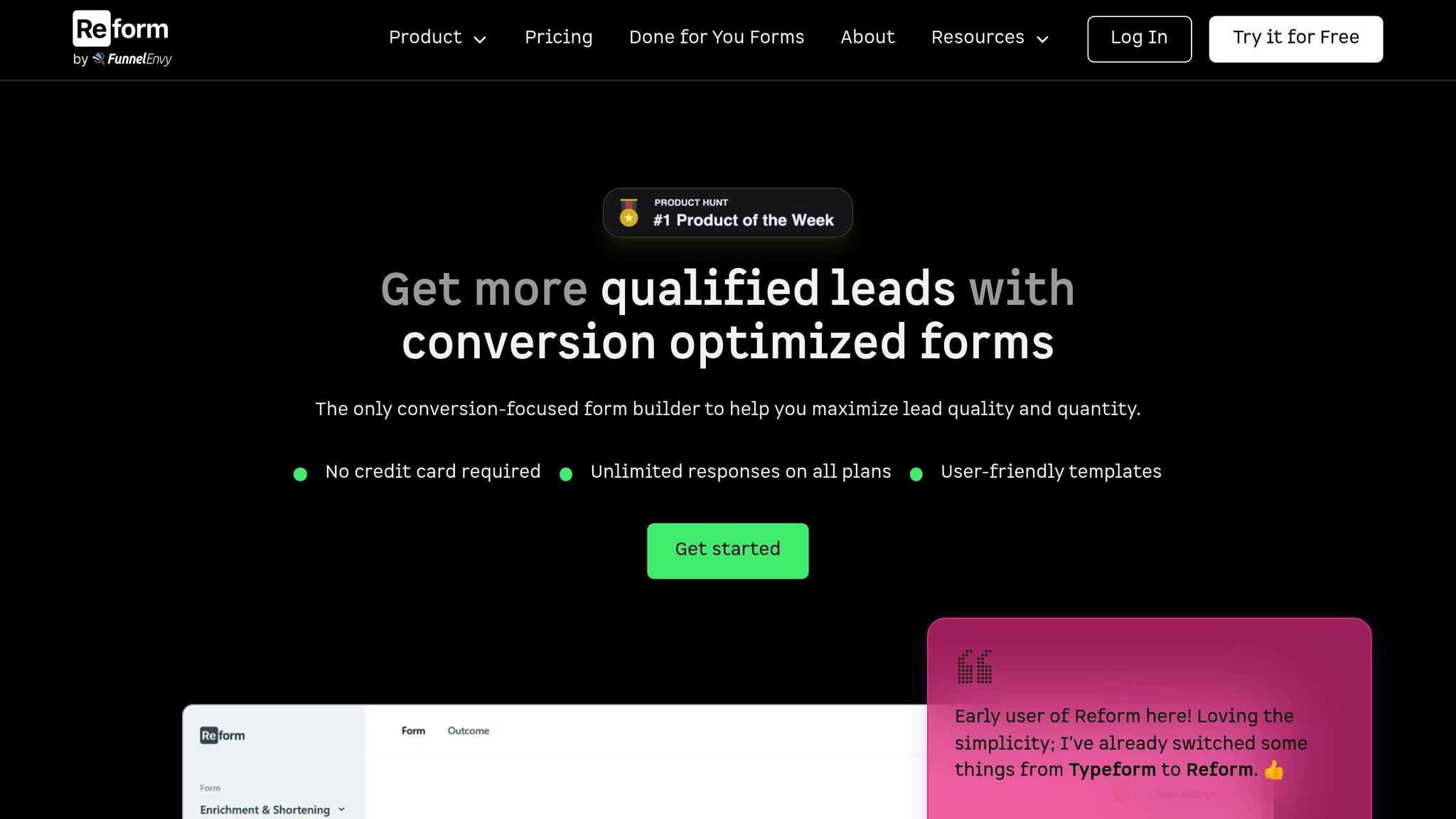
Reform is a no-code form builder designed to streamline lead capture while integrating directly with popular CRMs and marketing platforms like HubSpot, Salesforce, Marketo, ConvertKit, and Google Sheets. It offers real-time analytics, lead enrichment, and spam prevention, ensuring the quality of your leads remains high. For custom needs, Reform supports webhooks and APIs.
"As your source of truth, reliably getting your leads to your CRM is something Reform takes seriously. With custom mapping and duplicate handling, you can forget the clunky drop-in form builder your CRM offers."
- Reform
Reform bridges the gap between capturing leads and making data actionable. For example, companies using Reform have reported a 215% increase in qualified leads for B2B and SaaS businesses after running hundreds of tests. Its integration with Zapier expands its functionality by connecting to thousands of apps, while webhook triggers can automate tasks like updating CRM records, sending Slack notifications, or launching email sequences immediately after a form submission.
Google Analytics 4: Behavioral Insights for Smarter Automation
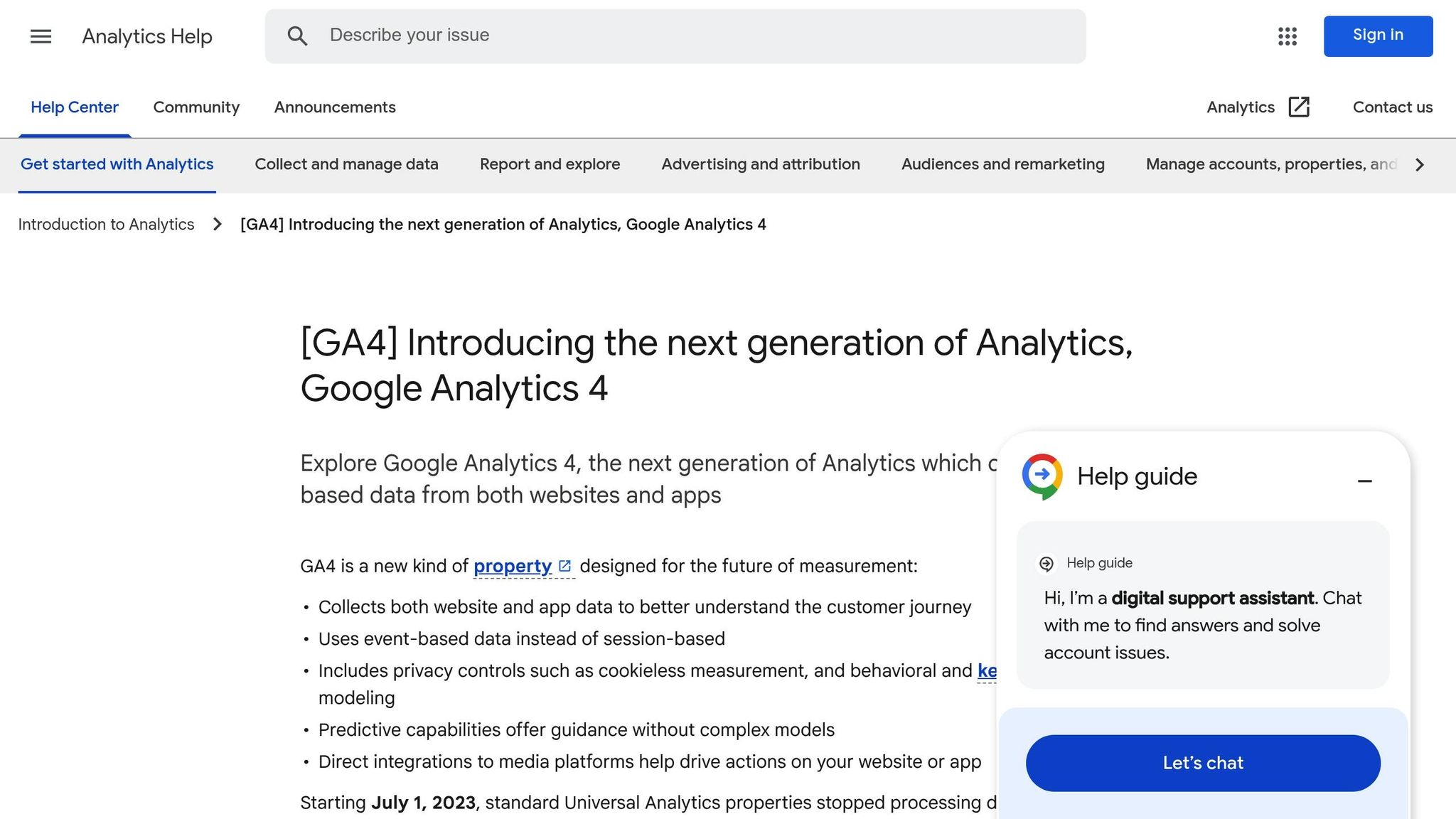
While Reform focuses on lead capture, GA4 takes it a step further by offering in-depth behavioral insights. Its event-based tracking model provides granular data on user behavior, helping marketers design more precise automation workflows.
GA4’s attribution modeling gives teams a clearer picture of which touchpoints drive conversions, enabling smarter automation strategies. Plus, its integration with Google Ads simplifies audience creation and retargeting efforts. For those needing advanced personalization, GA4’s API allows for custom integrations tailored to specific needs.
One standout feature is its cross-platform tracking, which follows user journeys across websites, mobile apps, and even offline interactions. This comprehensive view is invaluable for businesses running multi-channel campaigns, allowing them to create highly effective automation triggers.
Mixpanel: Simplifying Behavioral Analytics
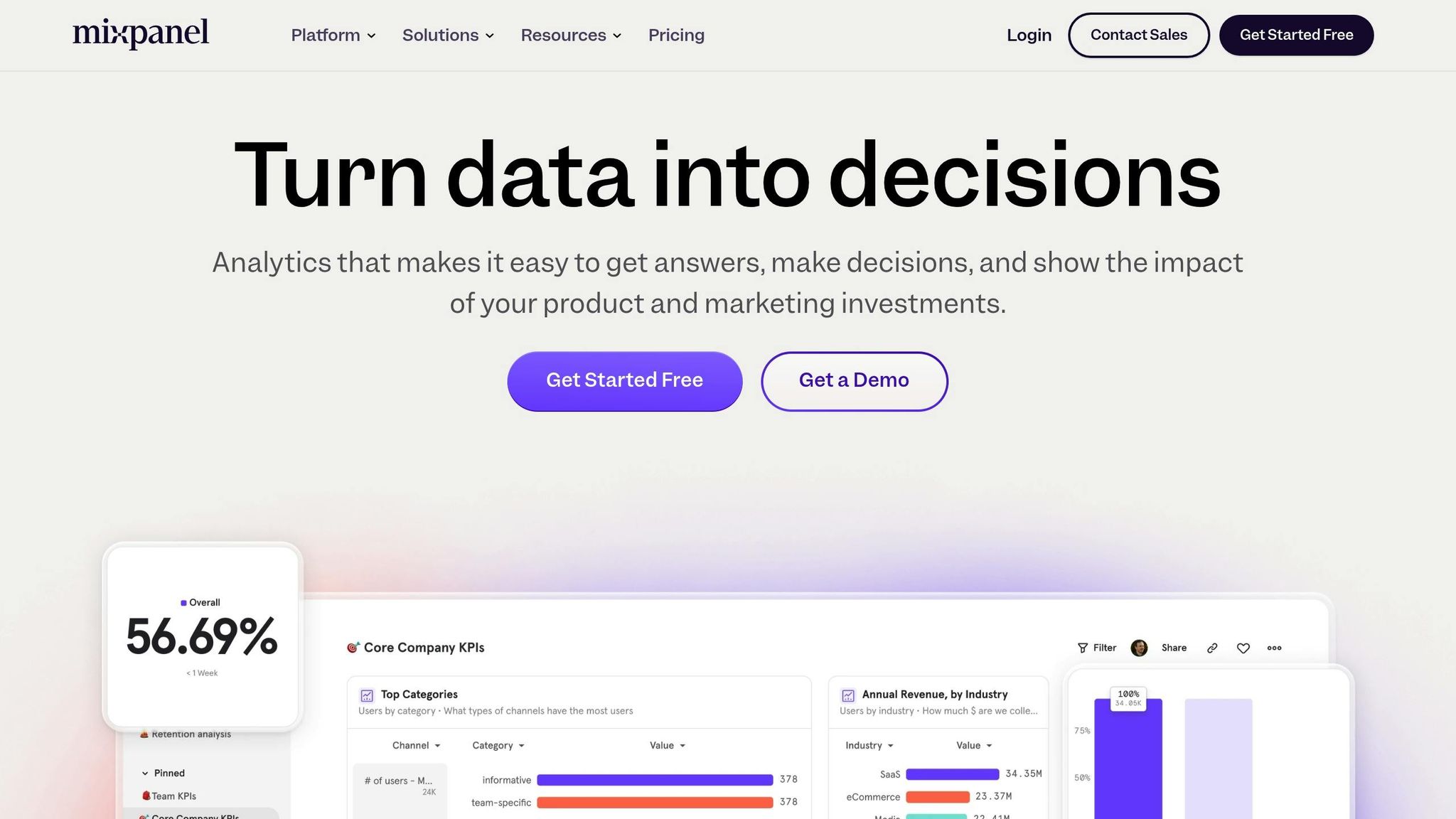
Mixpanel excels at event-based analytics with a focus on usability. Its intuitive interface and powerful segmentation tools make it easy to create behavioral cohorts based on specific user actions. These cohorts can then be synced with marketing automation tools for personalized campaigns.
The platform’s funnel analysis is particularly useful, helping marketers identify drop-off points where automated interventions, like targeted emails or notifications, can boost conversions.
Amplitude: Advanced Product Analytics for SaaS and E-Commerce
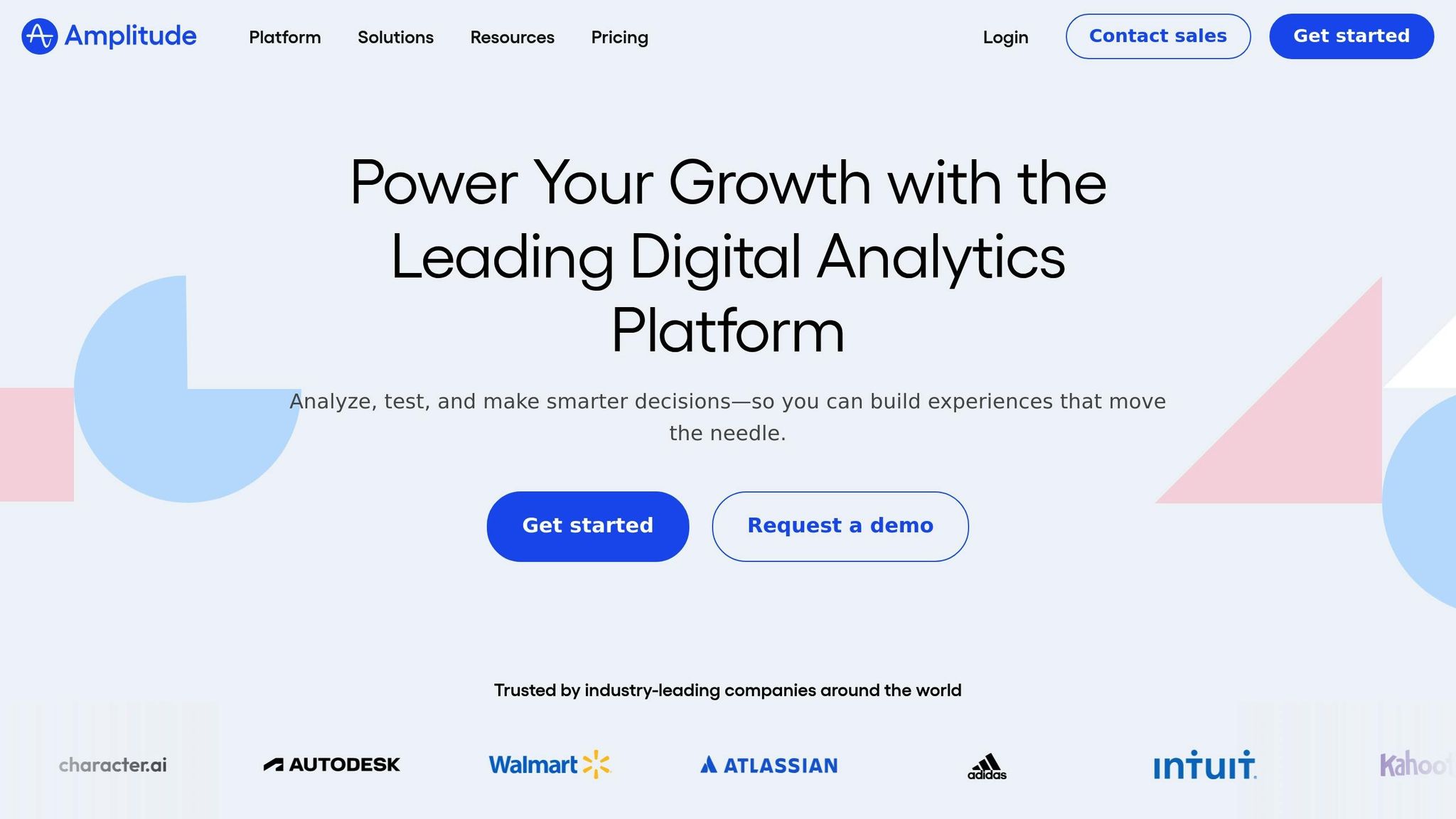
Amplitude specializes in product analytics, making it a go-to choice for SaaS and e-commerce businesses. Its advanced cohort analysis tools allow marketers to trigger automated actions - like email sequences, in-app messages, or push notifications - based on user engagement patterns.
Both Mixpanel and Amplitude offer robust API support and native integrations, making it simple to transform behavioral data into immediate marketing responses. By linking user actions to automated workflows, these tools help modern marketers stay agile and responsive to customer needs.
sbb-itb-5f36581
Strategies for Marketing and Analytics Integration
Bringing marketing automation and analytics together requires smart strategies that simplify the process and ensure seamless data flow. Below, we explore practical methods to achieve this, building on the foundational features discussed earlier.
Using Platforms with Native Integrations
Platforms offering native integrations eliminate the need for complex coding and reduce errors in data synchronization. These built-in connections provide a comprehensive view of account interactions, refine lead scoring, and improve team collaboration. They also enable automated lead handoff and nurture continuity, making it easier to assess pipeline impact and manage multi-touch attribution effectively.
A great example of this is Spotify's use of Mailchimp's Email Verification API in March 2023. Under the leadership of Sarah Chen, Spotify's Email Marketing Manager, they cleaned a massive subscriber database of 45 million users. This real-time verification reduced their email bounce rate from 12.3% to just 2.1% within 60 days. The result? A 34% boost in deliverability and an impressive $2.3 million increase in revenue.
Leveraging API and Webhook Support
When native integrations aren’t available, APIs and webhooks can step in to bridge the gap. Understanding their differences is key to choosing the right solution for your needs.
| Feature | Webhooks | APIs |
|---|---|---|
| Communication Direction | Server-to-Server | User-to-Server |
| Initiation of Communication | Server (Event-Driven) | Client (Request-Response) |
| Real-time vs. Polling | Real-time data transmission | Often involves client polling |
| Use Cases | Instant event notifications | On-demand data retrieval/manipulation |
| Flexibility | Best for real-time scenarios | Best for controlled data access |
Webhooks are perfect for real-time, event-driven scenarios. For instance, when a user submits a form on your website, a webhook can instantly update your CRM, trigger a Slack notification, or start an email sequence.
APIs, on the other hand, are ideal for situations requiring more control over data exchange, such as generating reports or syncing large datasets. They allow applications to share data seamlessly, regardless of programming languages or internal structures.
For the best results, consider combining both methods. Use webhooks for instant event notifications and APIs for on-demand data retrieval. Together, they create a strong and efficient framework for data exchange.
Optimizing Forms with Integration-Ready Tools
Forms are the final step in your analytics integration chain, and they need to handle data efficiently. Integration-ready tools can significantly improve form conversion rates, often surpassing the industry average of 2.9%, by streamlining data handling and automating workflows.
Reform is a standout example, offering direct integrations with popular CRMs and marketing platforms. It also supports webhooks and APIs for custom connections when standard integrations fall short.
To optimize your forms, focus on simplicity and usability. Include clear calls to action, position forms above the fold for better visibility, and ensure essential fields like email addresses are included. Pay attention to fields with high drop-off rates. For example, Matomo discovered that their "Overview of your needs" field caused 1,732 users to abandon the form. By replacing it with a dropdown menu, they greatly reduced completion times.
The key to successful form integration lies in tools that sync data automatically with your analytics platforms while maintaining data accuracy. Features like multi-step forms, conditional routing, and real-time validation ensure you collect the right information without overwhelming users. Plus, direct CRM integration ensures that lead data is immediately ready for analysis and automation workflows.
Conclusion: Getting the Most from Integrated Marketing Analytics
Combining marketing automation tools with analytics platforms isn't just a bonus - it’s a necessity for businesses aiming to maximize their marketing ROI. Here’s why: companies that embrace data-driven marketing are six times more likely to see year-over-year profitability. Plus, data-driven organizations are 23 times more likely to acquire customers and 19 times more likely to turn a profit.
Integration also lays the groundwork for personalization, which is no longer optional in today’s market. A whopping 80% of customers are more inclined to buy when brands deliver personalized experiences. Even more striking, 90% of U.S. respondents say personalized marketing is critical to keeping them engaged. To meet these expectations, businesses need tools that integrate seamlessly, allowing them to deliver the tailored experiences customers now demand.
This is where real-time data integration becomes essential. Platforms like Reform play a pivotal role by ensuring lead data flows directly into analytics systems. With these capabilities, businesses can deliver the kind of real-time personalization that modern consumers have come to expect.
But having the right tools isn’t enough. The average company juggles 120 MarTech tools, yet only 58% of these are fully utilized. That’s a massive missed opportunity. By focusing on tools that integrate smoothly, businesses can unlock five to eight times the ROI compared to those that don’t prioritize data-driven strategies. Start by analyzing your current tech stack: pinpoint gaps in data flow, eliminate tools that don’t add value, and prioritize solutions with native integrations or strong API capabilities. Begin with your forms - often the first touchpoint for data collection - and ensure they’re seamlessly connected to your broader marketing and analytics systems.
At the end of the day, success doesn’t come from having the most tools - it comes from having tools that work together effectively. Make integration your priority, and watch your marketing performance soar.
FAQs
How does integrating marketing automation tools with analytics platforms enhance lead quality and boost ROI?
Connecting marketing automation tools with analytics platforms gives businesses the power to make smarter, data-driven decisions. By linking campaign performance with real-time insights, companies can fine-tune their targeting, develop tailored campaigns, and better understand the customer journey.
These insights enable businesses to nurture leads more effectively, enhance conversion rates, and focus resources on strategies that deliver the best results - leading to higher ROI and improved lead quality.
How does real-time data synchronization improve marketing analytics and campaign results?
Real-time data synchronization transforms marketing analytics by delivering immediate insights into campaign performance. This means marketers can spot trends as they happen, make smarter decisions, and tweak strategies instantly to keep campaigns effective and aligned with current demands.
With instant updates and the ability to resolve issues quickly, real-time synchronization enhances customer experiences, ensures smarter use of resources, and boosts ROI. It equips teams to respond proactively, paving the way for more impactful campaigns and increased revenue opportunities.
What’s the difference between APIs and webhooks for integrating marketing automation with analytics tools, and when should you use each?
APIs and webhooks both play a role in connecting marketing automation tools with analytics platforms, but they operate in distinct ways.
APIs function through two-way, request-based communication. This means data is exchanged only when a specific request is made. APIs are a great choice when you need to retrieve data on demand or when integrating systems that require precise control over how and when data flows.
Webhooks, in contrast, rely on real-time, event-driven communication. They automatically send data whenever a specific event happens - like a form submission or a lead update. This makes them ideal for immediate updates and actions that need to happen right away.
In short, use APIs for on-demand data access or manipulation, and opt for webhooks when you need automatic, real-time notifications triggered by specific events.
Related posts
Get new content delivered straight to your inbox

The Response
Updates on the Reform platform, insights on optimizing conversion rates, and tips to craft forms that convert.
Drive real results with form optimizations
Tested across hundreds of experiments, our strategies deliver a 215% lift in qualified leads for B2B and SaaS companies.




